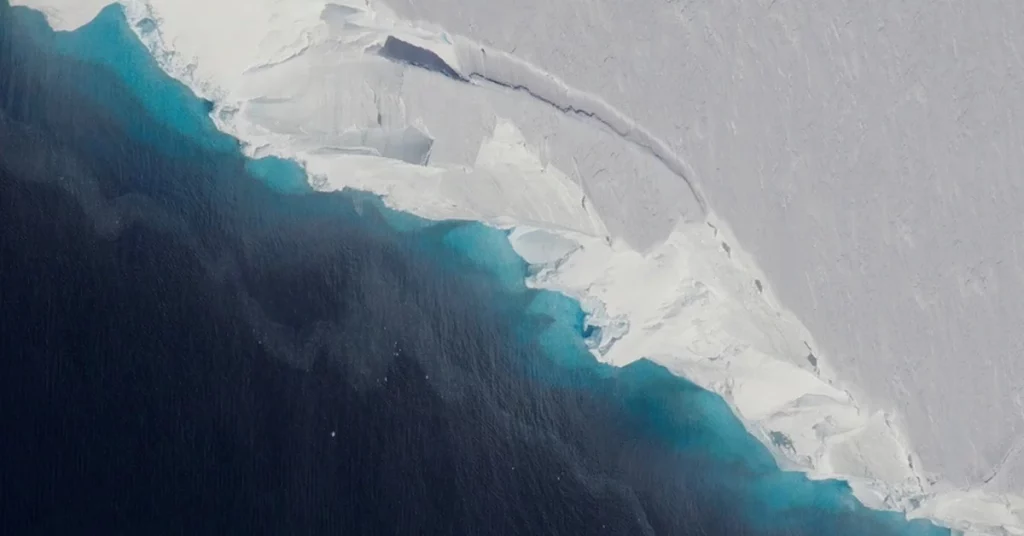Ice loss from the second largest sea ice stream in West Antarctica, and Thwaites Glacier known as “icy apocalypse‘, at present there is great uncertainty for future sea level forecasts.
Its bottom deepens from the top of the river to more than two kilometers below the surface, and the warm, dense and deep waters give heat to the existing ice, melting Their shelves are icy from below. Combined, these conditions make the glacier vulnerable to uncontrolled retreat.
A new study found that The alarming rate at which a huge glacier is melting, The size of the state of Florida in the United States, It can be predicted using a combination of computer models and physical data. The study was recently published in the scientific journal temper natureAnd the Map a critical area of the ocean floor in front of the glacier to quantify past melting.
:quality(85)/cloudfront-us-east-1.images.arcpublishing.com/infobae/TCHCXAFM7FDHNI62PPCDPT5X2I.JPG)
It is already known that it is melting quickly, but it is not known exactly how quickly it will melt or how much ice will fall into the ocean.
Estimates the total loss of the glacier and ice basins surrounding It will raise sea level by 1 to 3 metres. In the study, the researchers took pictures of geological features that are not yet known to exist, allowing the Drop future changes on the iceberg.
“The images we collect provide us with vital information about the processes that take place in Critical intersection between the glacier and the ocean said Anna Wolin, a physical oceanographer at the University of Gothenburg, who operated Rán, the robot the scientists used in their research.
According to the study, the rate at which it dissolves Thwaites Glacier, also known as the end of the world glacier, the second largest sea ice current in Antarctica, there is a great deal of uncertainty. The images taken by the researchers include 160 parallel edges that formed when the edge of the glacier rose and fell with the tide.

To document how much the glacier has receded in the past, The researchers analyzed these formations at a depth of 700 meters under waterUsing computer models to predict tidal cycles.
They found that a ridge formed daily. Moreover, they found that at some point in the past 200 years, over a period of less than six months, The edge of the glacier has receded more than 2.1 kilometers per yeartwice as fast as the rate recorded by satellite between 2011 and 2019.
To capture the images and supporting data, the researchers used a robotic vehicle equipped with sensors. The robot named Rán, Set the area of the sea floor off About the size of the Houston glacier, Texas, allowing scientists to reach the glacier for the first time. “This was a pioneering survey of the ocean floor, made possible by recent technological advances in autonomous ocean mapping,” said Anna Wolin.

The researchers hypothesize that their results indicate the presence of Continuous bounce pulses Very fast on Thwaites Glacier in the last two centuries. He concluded, “Similar rapid retreat pulsations are likely to occur in the near future as the exposed area migrates again and settles at high points on the sea floor.”
“Thwaites are really holding their nails today and we should expect to see big changes on small time scales in the future. — even from year to year — once the glacier recedes beyond a shallow ridge at its bottom,” according to Robert Larter of the British Antarctic Survey, who is also the study’s author.
Although many questions remain, one thing is certain, according to Graham, that scientists used to think that the Antarctic ice sheets “were lazy and slow to respond, but that is simply not true,” since they “kicked Only a small Thwaites can elicit a great response.”
Read on:

“Proud web fanatic. Subtly charming twitter geek. Reader. Internet trailblazer. Music buff.”

:quality(70):focal(917x454:927x464)/cloudfront-us-east-1.images.arcpublishing.com/elfinanciero/IK6YWCPEYFBRRFEKOPGFRQXC54.jpg)





More Stories
ESA captures mysterious spider shapes on Mars
How can you record your video calls on WhatsApp? This is how it's done on Android – Teach Me About Science
Retro Nintendo games are coming to iPhone: how to install them